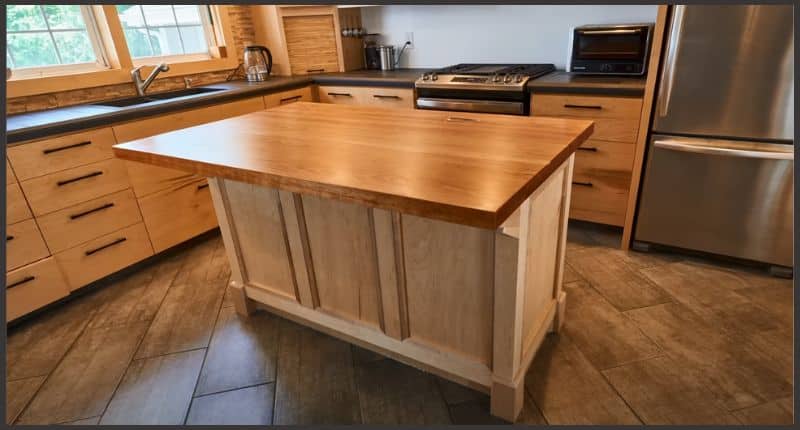In the culinary world, mastering the art of knife skills is an essential foundation for any aspiring chef or home cook. No matter the recipe or cuisine, understanding the ten basic knife cuts is crucial to achieve precision and consistency in your food preparations. These knife cuts go beyond mere chopping and slicing – they are the building blocks of culinary craftsmanship. From the fine Brunoise to the rough Mirepoix, each knife cut has its unique purpose and application in the kitchen. Join us as we delve into the world of knife skills and discover the transformative power of mastering these ten fundamental knife cuts.
Table of Contents
What are the 10 Basic Knife Cuts: Unlocking the Secrets of Culinary Precision
If you’ve ever watched a professional chef chop, slice, and dice with lightning speed and flawless precision, you’ve probably wondered what their secret is. How do they effortlessly transform ingredients into a symphony of flavors and textures? The answer lies in their mastery of knife cuts, the foundational skills that every chef must learn.
In this article, we will take a deep dive into the world of knife cuts, exploring the ten basic knife cuts that form the building blocks of culinary expertise. Whether you’re an aspiring chef or a home cook looking to take your skills to the next level, understanding and mastering these knife cuts will dramatically enhance your culinary repertoire.
1. Mince
Let’s begin with one of the most fundamental knife cuts: mincing. Mincing involves finely chopping ingredients into tiny, uniform pieces, almost to the point of puree. This technique is commonly used for garlic, ginger, and herbs, where texture and flavor need to be evenly distributed throughout a dish.
To mince effectively, start by holding the knife with a firm grip and rocking it back and forth while moving it across the ingredients. With practice, you’ll develop a rhythmic motion that quickly transforms your ingredients into beautifully minced morsels.
2. Dice
Next up is dicing, a versatile knife cut that adds visual appeal and texture to your dishes. Dicing involves cutting ingredients into small, uniform cubes. A classic example of dicing is seen in mirepoix, the flavor base for many soups and sauces, consisting of finely diced carrots, celery, and onions.
To dice like a pro, first, slice your ingredient into sticks or planks of the desired thickness. Then, cut these slices into evenly sized cubes by making perpendicular cuts. The key to perfect dicing lies in maintaining consistent sizes to ensure even cooking.
3. Julienne
Julienne, also known as matchstick or French cut, involves cutting ingredients into long, thin strips resembling matchsticks. This elegant knife cut is often used for garnishes, stir-fries, and salads to add visual appeal and create textures that complement the dish.
To julienne, start by creating a rectangular flat surface by cutting off the curved sides of the ingredient. Then, slice the ingredient into thin planks and cut these planks into long, thin strips. Consistency is crucial in julienning, as evenly sized strips ensure even cooking and a polished presentation.
4. Brunoise
Brunoise is a fine knife cut that takes dicing to the next level. It involves cutting ingredients into tiny, uniform cubes, similar to dice, but on a smaller scale. This precision cut is commonly used in sauces, soups, and delicate preparations where texture and aesthetic appeal matter.
To achieve a brunoise, start by dicing your ingredient into small cubes. Then, refine these cubes by cutting them into even smaller cubes, around 1 to 2 millimeters in size. The key here is patience, a steady hand, and a sharp knife.
5. Chiffonade
If you’ve ever seen delicate ribbons of basil decorating a beautiful pasta dish, you’ve witnessed the chiffonade cut. Chiffonade involves cutting leafy greens or herbs into long, thin strips, adding both aesthetics and flavor to your culinary creations.
To chiffonade, start by stacking the leaves together, rolling them tightly, and then making thin, precise cuts across the rolled leaves. This technique allows you to create beautiful, uniform strips that can elevate the presentation of any dish.
6. Bias
The bias cut is a technique where ingredients are sliced diagonally, creating elongated, angled pieces. This cut adds visual interest and enhances the texture of ingredients like carrots, cucumbers, and celery.
To achieve the bias cut, angle your knife around 45 degrees and slice the ingredient diagonally. This technique exposes a larger surface area, often resulting in faster and more even cooking.
7. Batonnet
Batonnet, translated from French as little stick, refers to cutting ingredients into long, rectangular pieces. Batonnets are thicker than julienne cuts and are commonly used for dishes like French fries or as the base for sautés.
To create batonnet cuts, start by cutting your ingredient into planks of a specific thickness. Then, cut these planks into long, rectangular sticks, typically around ½ inch in width and height.
8. Paysanne
The paysanne cut, also known as the farmer’s cut, is a rustic, chunky style of knife cut. It involves cutting ingredients into small, square or rectangular shapes, usually measuring around ½ inch in size.
Paysanne cuts are often used for root vegetables and hearty dishes where texture and heft are desired. This cut adds a rustic, homely touch to stews, braises, and roasted vegetable medleys.
9. Tourne
The tourne, or turned, cut is a precision knife cut that transforms vegetables into beautiful, barrel-shaped pieces. This cut requires excellent knife skills and is prized for its ability to create elegant presentations.
To tourne, start by peeling the vegetable, leaving seven equal surfaces. Then, carefully carve the vegetable into a barrel-like shape, featuring seven rounded sides. The tourne cut is often used for garnishes and upscale dishes that demand attention to detail.
10. Slice
Last but not least, the humble slice. While it may seem like the most basic of all knife cuts, the slice is a versatile technique used in countless culinary preparations.
To slice effectively, ensure your knife is sharp and your grip is firm. Use a smooth and controlled motion to cut ingredients into thin, even slices. From tomatoes for a Caprese salad to fish for sashimi, the slice is a fundamental knife cut that can make or break a dish.
The Importance of Knife Skills
Now that you’ve familiarized yourself with the ten basic knife cuts, it’s important to understand why honing these skills is crucial for any aspiring chef or enthusiastic home cook.
1. Efficiency: Knife skills streamline the cooking process by allowing you to prep ingredients quickly and efficiently, saving valuable time in the kitchen.
2. Consistency: Proper knife cuts ensure that ingredients cook evenly, providing consistent textures and flavors throughout a dish.
3. Presentation: Well-executed knife cuts enhance the visual appeal of your dishes, elevating them from mundane to extraordinary.
4. Safety: Mastering knife techniques reduces the risk of accidents in the kitchen, as proper form and control minimize the chances of slips and cuts.
In Conclusion
A great chef once said, The knife is the chef’s paintbrush, and the cutting board is their canvas. Knife skills are the gateway to culinary excellence, enabling you to transform simple ingredients into works of art.
By mastering the ten basic knife cuts—mince, dice, julienne, brunoise, chiffonade, bias, batonnet, paysanne, tourne, and slice—you’ll unlock a world of culinary possibilities and take your cooking skills to new heights.
So, grab your knife, sharpen your skills, and let the symphony of flavors and textures begin!

Photo by Timon Studler on Unsplash
Additional Guide
Here are three related articles for the topic “What are the 10 basic knife cuts”:
1. [Kitchen Tips for the Home: Maximize Efficiency and Master Culinary Delights](https://onekitchenreview.com/kitchen-tips-for-the-home-maximize-efficiency-and-master-culinary-delights/): This article provides valuable tips and techniques for maximizing efficiency in the kitchen. It covers various aspects of cooking, including knife skills, which are essential for mastering the 10 basic knife cuts.
2. [How to Make a Small Kitchen Look Bigger](https://onekitchenreview.com/how-to-make-a-small-kitchen-look-bigger/): In this article, you can learn practical strategies for making the most of a small kitchen space. While it may not directly focus on knife cuts, having a well-organized and functional kitchen layout is crucial for efficient and effective knife work.
3. [Things to Consider When Designing a Kitchen](https://onekitchenreview.com/things-to-consider-when-designing-a-kitchen/): Designing a kitchen involves considering various factors that influence its functionality. This article explores different aspects of kitchen design, such as layout and workspace, which can greatly impact knife cuts and overall culinary experience.
Remember to use the tag to create internal links in your content.
FAQs: What are the 10 basic knife cuts
What are the 10 basic knife cuts?
The 10 basic knife cuts refer to a set of techniques that professional chefs use to prepare ingredients. These cuts are essential for mastering culinary skills and are important in achieving consistent and appealing presentation of food. Here are the 10 basic knife cuts:
- Julienne: This cut involves cutting vegetables or fruits into long, thin strips, usually around 2-3 inches in length and 1/8 inch in thickness.
- Brunoise: In this cut, the ingredient is first cut into julienne and then finely diced into small cubes, usually around 1/8 inch in size.
- Dice: Dicing refers to cutting ingredients into cubes of equal size. The size can vary depending on the recipe, but common sizes include 1/4 inch, 1/2 inch, and 3/4 inch cubes.
- Mince: Mincing involves finely chopping ingredients into very small pieces, often used for herbs, garlic, or ginger. The pieces should be uniform in size.
- Chiffonade: This technique is used for cutting leafy greens or herbs into long, thin strips. The leaves are stacked, rolled tightly, and then sliced finely.
- Batonnet: Similar to julienne, batonnet involves cutting vegetables or fruits into long, thin sticks. However, batonnet cuts are larger, typically around 1/4 inch in thickness.
- Diagonal: A diagonal cut involves slicing ingredients at an angle, creating elongated pieces. This cut is often used for presentation purposes, adding visual interest to the dish.
- Oblique: Oblique, or roll cut, involves cutting cylindrical ingredients, such as carrots, on a diagonal angle and rolling it while cutting. This creates a unique shape and helps with even cooking.
- Paysanne: This cut involves slicing vegetables into thin, even pieces about 1/2 inch in size and 1/8 inch thick. The resulting shape is similar to a rough square.
- Tourne: Tourne, or turned, cut is a technique used for creating seven-sided football-like shapes on vegetables. This requires precision and practice and is often seen as an advanced knife skill.
Mastering these basic knife cuts can significantly improve your cooking skills and enhance your culinary presentations.
Why is it important to master the 10 basic knife cuts?
Mastering the 10 basic knife cuts is important for several reasons:
- Consistency: By mastering these cuts, you can ensure that all your ingredients are cut to a uniform size, leading to even cooking and a consistent end result in your dishes.
- Presentation: Properly cut ingredients enhance the visual appeal of your dishes. The 10 basic knife cuts allow you to create professional-looking presentations and add aesthetic value to your food.
- Efficiency: Knowing how to execute these cuts proficiently saves time in the kitchen. It enables you to work more efficiently and accomplish tasks quickly while preparing meals.
- Professionalism: Mastering these techniques demonstrates your culinary skills and adds a level of professionalism to your cooking. It can impress guests and elevate the quality of your meals.
Overall, mastering the 10 basic knife cuts is an essential skill for any aspiring chef or home cook looking to enhance their cooking abilities and create visually appealing and delicious dishes.
Are the 10 basic knife cuts only used in professional cooking?
No, the 10 basic knife cuts are not limited to professional cooking. While professional chefs often utilize these techniques to achieve consistent results in high-volume kitchens, home cooks can also benefit from learning and practicing them.
By mastering these knife cuts, home cooks can improve their culinary skills, enhance their food presentations, and make their cooking more efficient. Additionally, knowing the proper techniques for cutting ingredients can result in more even cooking and better flavor distribution in dishes.
Learning and practicing the 10 basic knife cuts can elevate the quality of your meals and allow you to prepare dishes like a pro, regardless of whether you are cooking in a professional setting or in the comfort of your own kitchen.
Do I need specialized knives to execute the 10 basic knife cuts?
No, you do not necessarily need specialized knives to execute the 10 basic knife cuts. While certain types of knives, such as chef’s knives and paring knives, are commonly used in professional kitchens, you can achieve the cuts with a standard, versatile set of knives.
A chef’s knife, with its broad blade and sharp edge, is the most commonly used knife for executing these cuts. A paring knife, with its small and narrow blade, is handy for more intricate cuts like mincing or shaping vegetables.
However, it is essential to have sharp, well-maintained knives regardless of the type. Dull knives can be unsafe and make it difficult to achieve clean and precise cuts. Regular sharpening and proper knife care are necessary to ensure optimal performance.
Investing in a good set of knives suited to your needs and preferences can make your cutting tasks more efficient and enjoyable, but specialized knives are not a requirement to execute the 10 basic knife cuts.
Can I learn the 10 basic knife cuts through online resources or videos?
Yes, you can learn the 10 basic knife cuts through various online resources and videos. A simple online search will provide you with instructional videos, tutorials, and articles that demonstrate and explain each knife cut technique.
When learning through online resources, it is important to choose reputable sources with experienced instructors or chefs. Look for videos or tutorials that break down each knife cut step-by-step and provide clear visuals to help you understand the proper technique.
It is also advisable to practice the cuts under the guidance of an experienced cook or chef to ensure you are using the correct form and positioning of your hands. This will help you develop the necessary precision and safety when handling knives.
Remember, practice makes perfect, so dedicate time to honing your knife skills and gradually build your proficiency in executing the 10 basic knife cuts.



